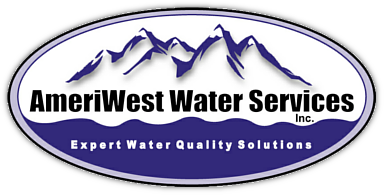Hydrolysis: All condensed phosphates are subject to decomposition when they are dissolved in water. The reaction is called hydrolysis because the water is an active participant in the reaction. During the reaction, bonds in both the phosphate and water are broken. The resulting hydrogen atom unites with the oxygen in the broken phosphate couple, forming P-OH. The OH portion of water reacts with the phosphorous in the broken phosphate couple, forming P-OH. The result is one molecule of condensed phosphate has reformed into two new phosphates. When the simplest condensed phosphate, pyrophosphate, undergoes hydrolysis, it is converted into two orthophosphate ions. When tripolyphosphate, the next simplest condensed phosphate, undergoes hydrolysis one orthophosphate ion and one pyrophosphate ion is formed. In both cases, the hydrolysis reaction leads directly to the formation of orthophosphate. As the phosphate chain length increases, decomposition need not always result in orthophosphate production. A six-membered linear phosphate may decompose to form two ions of tripolyphosphate. In municipal water treatment to control iron and manganese, product reversion from polyphosphate to orthophosphate is undesirable because ortho phosphate shows no sequestering or threshold effect.
The following factors can affect the rate of the hydrolysis reaction (Monsanto, 1995):
Temperature:
Temperature has a direct effect on reversion rate. As in any chemical reaction, as temperature increases, the rate of reaction increases.
pH:
Acids and bases catalyze the reversion reaction. As the pH of a phosphate solution becomes more acidic than pH 7 or more basic than pH 11, the hydrolysis rate increases dramatically.
Metal ions:
The presence of multivalent metal ions has been reported to catalyze reversion rates. As the concentration of Ca++ or Al++ or Fe++ increases, reversion rates increase.
Concentration:
The concentration of phosphates in solution will affect reversion rates. At the mg/L level, as concentration increases, the reversion rate decreases.
Phosphate Specie:
Reversion rates are also affected by which phosphate specie is present. It is generally accepted that pyrophosphate is the most stable phosphate. Then follows tripoly and last the glassy phosphates. (Usually the opposite is found in product literature and sales rhetoric.) During hydrolysis of the longer chained phosphates, shorter chains as well as orthophosphate are formed. Among the shorter chains formed is pyrophosphate. Research suggests that when the pyrophosphate concentration reaches a certain level due to hydrolysis of higher condensed phosphates, the rates of reversion diminish. It may be that equilibrium is set up between the higher condensed phosphate and its molecular fragments after hydrolysis. Once a certain amount of the fragments are produced, the equilibrium is satisfied and reversion rate diminishes. Manufacturers recommend adding pyrophosphate to higher condensed phosphate solutions to retard reversion.
